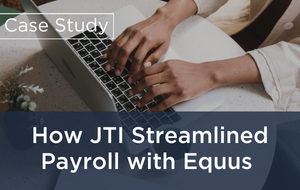What are the dangers lurking in your global mobility management system? There is a cliché in IT: if something is not broken, do not fix it. Or, more accurately perhaps, do not replace it. What that means in reality for large organizations with big legacy systems is that imperfect and ageing technology that just about does the job is left to tick over.
And it is understandable. Sticking with what is known can seem a safer option than ripping out a tried-and-tested system, and replacing it with something new. There is a fear of the unknown.
However, as the world of global mobility management (GMM) evolves, this approach of keeping old legacy applications on life support with sticky tape fixes, is not sustainable. And over time becomes one of the dangers lurking in your global mobility management system.
At some point the wheels will come off. And not only does staying put on legacy create all sorts of hidden costs and risks to the business. It also prevents organizations taking advantage of the many cost, flexibility and efficiency benefits of modern cloud-based software.
Hidden Costs Of A Legacy GMM System
Typically, when it comes to existing GMM systems, many large organizations will have their own home-grown bolt-on to the HR system. And while they can get information from the HR system, it is not connected to other internal systems or their vendors for services such as immigration or relocation.

When it comes to pulling together the full assignment cost estimate, the legacy system might cover demographic data and compensation, but not the costs and associated tax of relocation or immigration, as an example. Filling those gaps means using inaccurate spreadsheets or paying external providers to make calculations. Take relocation service vendors, for example. They provide multiple services, but the mobility team does not have the visibility to pre-empt costly issues such as delays because all the information sits in the vendor’s system, which is not connected to the internal legacy system.
Smaller organizations might rely completely on spreadsheets or an Access-type database, which cannot be shared nor track who has made changes. And other organizations might just fall back on outsourced service provider technology. In which case all the data and insights sit on a third-party system with very limited access, resulting in a lack of visibility and transparency.
For those larger organizations with a home-grown system, the reality is that after a couple of years it will only be providing up to 50% of the functionality they need. And the hidden cost to the business lies in all the duplication, manual effort, errors and huge numbers of workarounds developed over time.
It might not be a visible cost, but the time for a full-time employee running reports because they have to pull the data from 25 different sources soon adds up. As do the fees for having to plug those functionality gaps in disconnected legacy systems by paying third parties to run cost estimates, compensation calculations and even payroll. All of which are now easily supported by modern GMM solutions.
And for those organizations that stay with document-based instructions, there is a very high risk to the accuracy of payroll data that is received and processed by the various payrolls…
Click Here to read the full article about all of the dangers lurking in your global mobility management system.













